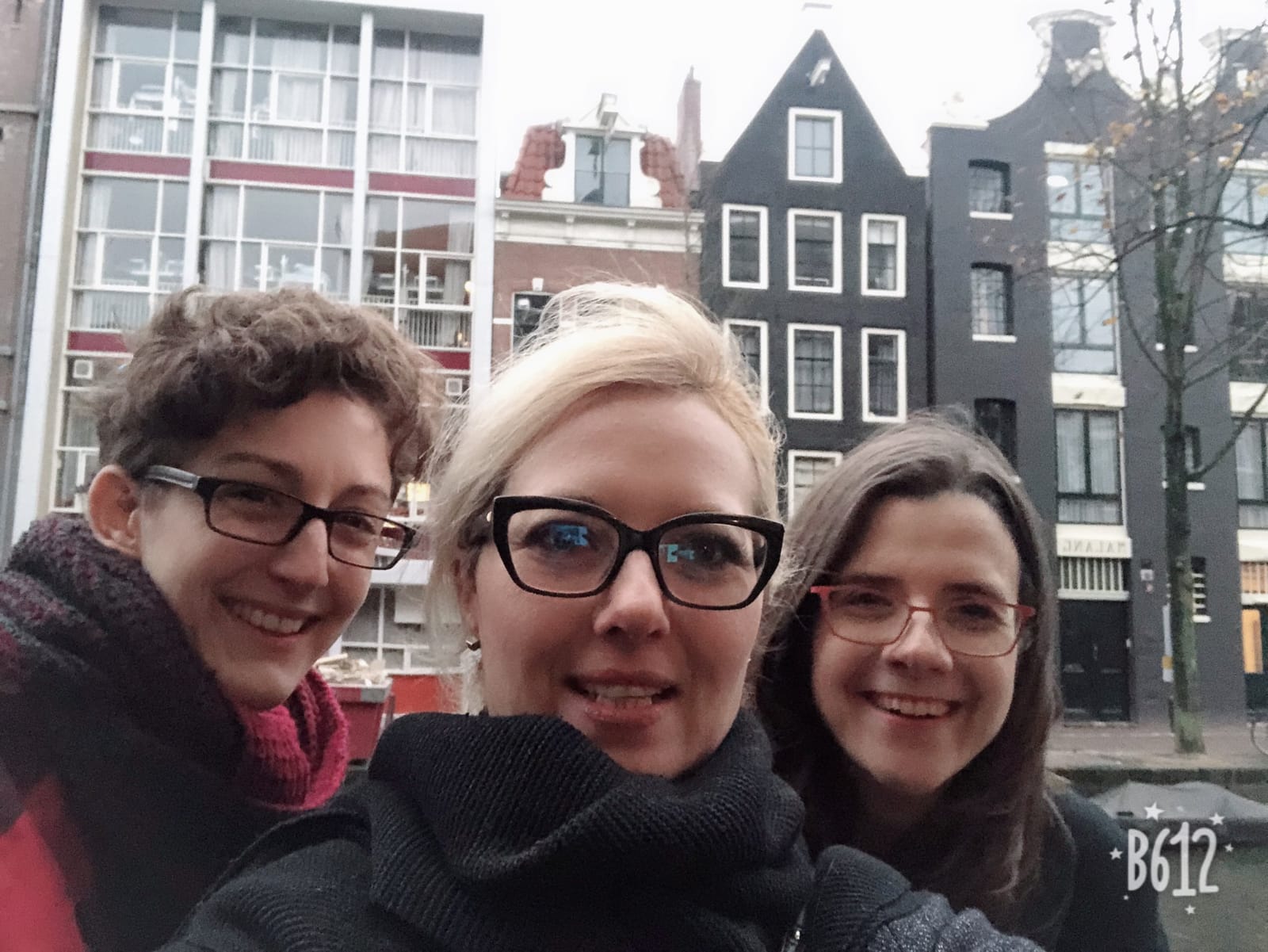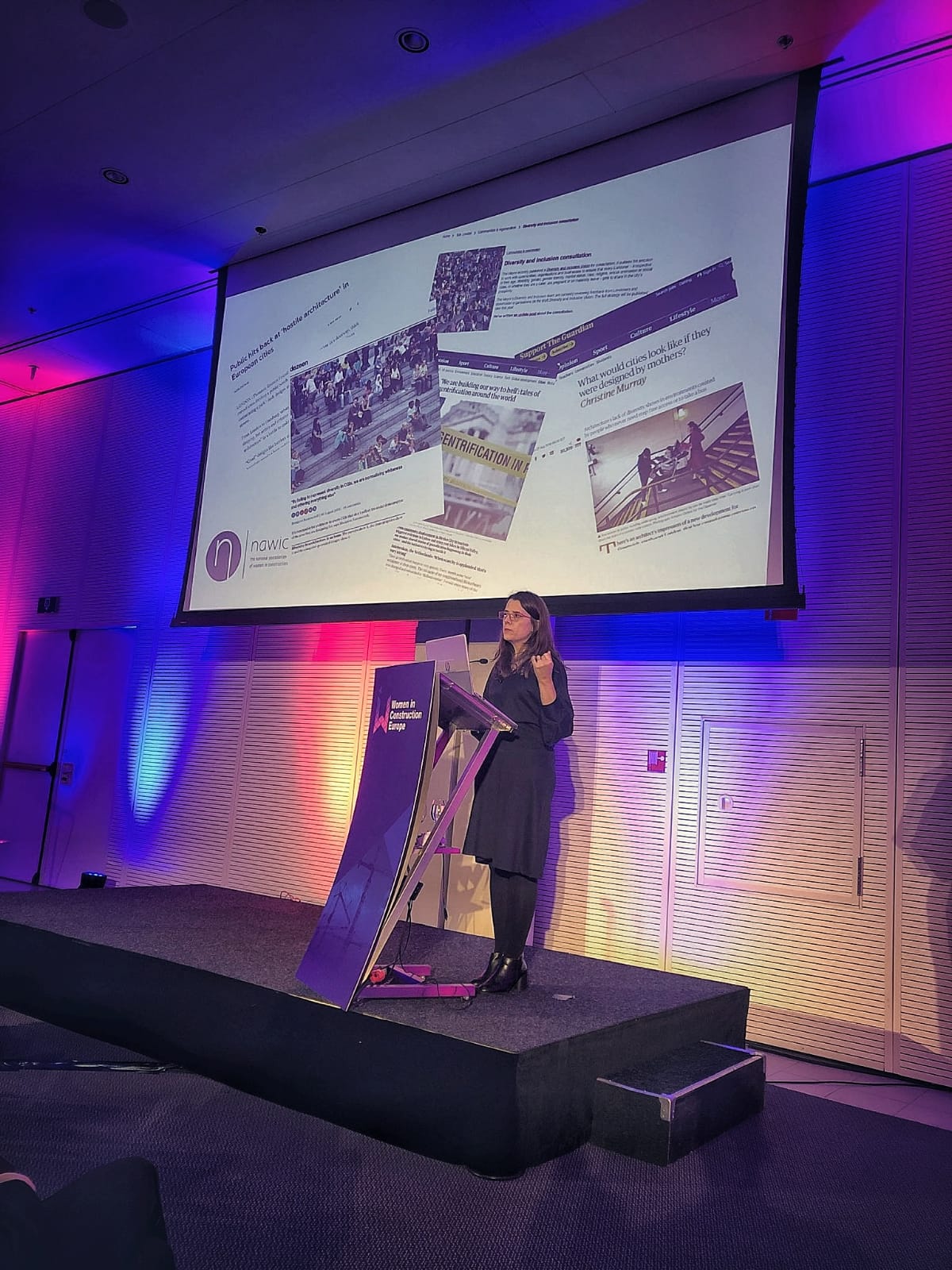European Women in Construction Summit, Amsterdam
Last week we had the honour of representing NAWIC London and South East at the first European Women in Construction Summit in Amsterdam.
Hosted by Maddox Events as part of their #WINConstruction World series, it was a fantastic opportunity to meet our peers from across Europe.
We are in the process of writing a more detailed piece about the event but for now, we wanted to share the transcript of our talk “Inspiring ourselves” and a link to the presentation LINK
We would like to thank Jordan Graham for giving us this fantastic opportunity.
(Intro)
Having listened to speakers in the past two days, I feel honoured and privileged to be speaking today.
The fact that so many remarkable individuals are here, in Amsterdam sharing knowledge and best practice, fills me with an overwhelming amount of hope for the year ahead. Come what may, Brexit or not, the people in this room, will no doubt continue to positively affect change in their everyday context
(Inspiration)
And thanks to the Maddox team, who brought us here, we will have been able to expand our network and pursue valuable international leads which may develop into future collaborations. In an industry like ours where there are not many of us, getting to know our peers is a competitive advantage one should not ignore.
Being part of our industry is to me both a privilege and a responsibility full of potential. A potential that inspires me and helps me remain passionate about my work despite the challenges.
This is because although there are other industries whose work is impacting the world in a key manner, very few have the lasting legacy the built environment has.
(Successful Built Environment )
The quality of the built environment can “transform people’s lives, help drive the economy and enhance, rather than damage the environment”. It is vital for local communities to thrive and requires long-term thinking and innovation with an emphasis on the common goal rather than on individual interests. It also requires flexibility and lifetime adaptability to both welcome multi-layered communities and to overcome future challenges.
Thanks to an increasing awareness of Equality Diversity and Inclusion In the past twenty years, we have gained a deeper understanding of the social impact of our work and are now able to deliver more inclusive urban interventions and although there is much more work to be done, we are already able to see its impact even in mainstream media.
(Awareness)
We are much more conscious of the consequences of gentrification, we have learnt to see accessibility and sustainability as part of the design brief. We accepted that if we are to live in denser cities, we will need different types of accommodation and amenity spaces to suit different stages of life as well as an unknown future. We also know that off-site manufacture can help us work more efficiently and building works are no longer an accepted nuisance for local communities with CSR and community engagement being an intrinsic part of the delivery.
(What’s holding us back?)
Having said this, we cannot pretend it is all great and ignore the fact that the construction industry suffers from historical stereotypes and bias which, unfortunately, have been perpetuated due to, precisely, a lack of diversity.
- For instance, how many times have you sat at a meeting where someone has questioned the need for accessible facilities on the back of low numbers of wheelchair users, without sparing a thought for other types of disability, parents pushing chairs, elderly tenants or victims of accidents who have been temporarily disabled?
- How many times have you sat at a meeting where you have heard an inappropriate comment based on a historical bias? For example, when a male colleague has been asked ;why it has to be him the one who needs to go to school to pick up their sick child?
(Redefining)
From the outside, our industry is seen as harsh, bullish and dirty and the roles available within it, as limited and our industry has not yet redefined this narrative.
This is why as individuals and role models to our younger peers, it is important to take action and acknowledge we can play an active role in redefining this image by showcasing the opportunities to be found within construction and challenging, rather than ignoring practices which are stopping us from having access to a wider pool of talent.
(Taking action)
Personally, I decided to act at the end of 2012. At the time, one of my nieces casually asked why I had chosen “a boy’s job” as a career. This thought had never crossed my mind, My grandmother was a railway engineer and an example to follow to me and my cousins and yet somehow, between my childhood and hers, something had changed.
This comment shocked me so much that I decided I had to find a way to change things. And so, in 2013 I chose to stand for the position of London and South East Chair for the National Association of Women in Construction (NAWIC)
- When deciding which group, I should get involved with, I chose to join and lead NAWIC because it is a network that encompass everyone who works in the industry rather than just a few.
- NAWIC is a global organization running since the 50s in the US and since 2003. It was both exciting and challenging but as a not for profit endeavor, the only limitation was our imagination.
- Being part of NAWIC has allowed me to support many women across the industry, many of whom were stuck in their career but it also helped me grow my network exponentially. Access to key females within the industry even gave me an edge at the last studio I worked at and enabled me to create my own alternative role to the associateship I was offered. It also gave me the confidence to co-found a design studio, and above all it has helped me understand the challenges faced by other professions and trades in order to better myself as Lead Consultant.
London and South East is the largest region within NAWIC UK. It is run by an amazing committee of 23. We have a task group of 6 working on our project The image of women in construction and further 30 ambassadors to help us deliver our school outreach program. All these people have day jobs in the industry and generously volunteer their time for the benefit of their peers. They do it because they care for the industry and want to see a different future. Without the constraints of a business, we are able to deliver a remarkable initiatives.
(Our programme)
Our industry faces a stream of talented professionals, primarily women, choosing to leave and turning to other industries for employment. There are numerous reasons, from career stagnation, inflexible environment to discrimination. We are committed to reversing this trend by focusing our efforts on our members’ career development.
- Skills
- Best Practice
- Legacy
- Business
Last year, one of our most popular events was one focusing in Women Returners. At that event, an organisation called so joined a panel in which several of our corporate partners such as Skanska , who run in-house returnships, were able to share the lessons learnt through the implementation of the programme.
But that is just one of the many examples that have helped us develop an understanding of the needs we need to cater for in order to inspire and support our peers.
(Affordable training at family /work friendly times)
As well as the pay gap, we have found that the documented household gap could be behind women’s reluctancy to prioritise on their own development.
- As an organisation, we want to facilitate our peers’ development as much as we can and providing flexibility is key
- Although children are not our target audience when it comes to professional events, we make room for them in order for parents who cannot make other arrangements to not need to choose.
- We have built a network of professionals who share our vision and who are keen to help us deliver training at much lower prices than elsewhere to support the advancement of minorities
- We partner with key organisations delivering industry-wide events to explore ways in which they could make those more inclusive and negotiate discounted rates to give our members an edge over their peers
(Formalised networking opportunities)
Access to Social Capital is a proven drawback for the progression of women and ethnic minorities yet studies show at managerial level, visibility counts for 90% of success.
Furthermore, Networking is a vital part of business life, with many decisions often being made outside the boardroom and yet studies show that traditionally spontaneous networking takes place around activities which are not inclusive, leaving minorities out of the decision process.
Our experts have told us that social capital and visibility are key to progressing from middle management to board level as well as to create social mobility.
- With this In mind, We have made formalised networking opportunities part of our calendar and provide a framework from which those forming part it, student members included, can build their own
- Our national status provides members access to an existing network should they need to be relocated and we encourage members to stay in touch
(Knowledge Sharing)
Our industry has a leaky pipeline in the UK. 45% of the trades being over 45 and without sufficient new arrivals, there is real danger is losing their knowledge and experience
To make matters worse, and despite the efforts made to streamline processes and improve quality standards, we are lagging behind when it comes to providing holistic approaches. People often working in silos developing similar solutions rather than coming together to combine their expertise
We have found that across all industries, women and millennials much more open to share knowledge and help each other if this can have a positive impact for everyone. With this in mind, we organise site visits and business breakfasts which provide an opportunity to exchange knowledge.
- Site visits:
For those who never go to site, is a a re-connection to the end goal where the host shares the challenges and opportunities found through the design and construction stages. Attendees are able to discuss how they have addressed a similar situation and to ask technical questions which can help them access knowledge and avoid future mistakes. - Breakfasts:
At our breakfasts, an individual presents a topic showcasing their particular expertise and the attendees are encouraged to both ask questions and share their own experience on the topic. This platform has helped us grow the collective knowledge, identify fellow professionals who could become our go-to with regard to certain topics
(Legacy)
Our educational agenda is one of our pillars. Challenging the image of construction and showcasing why it is important to take part in the shaping of our built environment are key to get parents on board
NAWIC are self-funded and our members share the desire to reach as far afield as we can with the resources we have. This is why re-investing is a priority for us. In order to engage the next generation, these are some of the things we do;
- We have a student membership which is very affordable (£15 per year) and gives them access to part sponsored tickets.
- Proceedings from our site visits and 25% of all other proceedings are set towards our educational fund which we use to buy materials for the engagement activities in schools and to fully fund tickets for organisations working with youths who are not in education or employment
- Working with organisations such as Girl Guiding, Schools and universities, our members organise activities and career sessions to ignite an interest in the younger generations. We also support student-run initiatives by helping them source speakers, employers etc.
Finally, and to help career advisers at schools by connecting directly with the industry and those doing the job, we are also in the process of developing a tool with Architectural photographer Morley von Sternberg which will shine a light over the many roles available in our industry through the experiences of the women behind them. The hope is we will challenge preconceptions such as linear careers, physical strength, low pay etc.
The project is titled The Image of Women in Construction and will have an online presence whereby the portraits will be accompanied by stories, and a book, which we would like contractors to use when engaging schools.
(Collaborators)
Before I end, I wanted to let you know about some of our collaborators, who inspire us and who we actively work with to make as big a difference as we can to our industry.
- (Built by Us) BBU is a social enterprise focused on connecting diverse talent with the industry through a range of mentoring programmes including FLUID(Diversity Mentoring Programme), an innovative scheme designed to address the retention and development of talented practitioners from diverse backgrounds for management and leadership roles in the built environment.
NAWIC London and South East have partnered Built by Us to provide our members mentoring opportunities through their programme.
- Women into Construction(WIC) is an independent not-for-profit organization which emerged from a London 2012 legacy project. It promotes gender equality in construction. They provide bespoke support to women interested in working in the construction industry through advice and guidance, training, work-placement and brokerage into jobs.
Among other things, NAWIC London and South East connect WIC to employment leads from our corporate members and contacts looking to widen their pool of talent.
We also provide regular opportunities to their apprentices and trainees to attend our events free of charge
- Women in Construction and Engineering Awards. Set up to empower women and encourage them to reach their full potential by recognizing and honouring their achievements and elevate the level of awareness, acceptance and visibility of women. As a direct consequence of these awards, we have seen the winners gain confidence and status within the industry but more importantly visibility which has, in return, inspired many others to put themselves forward. (Nominations are now opened)
NAWIC London and South East have been partners since 2016 and have helped to promote, judge, participate in panels and find judges and speakers
(A final thought)
Not being part of the majority, can give us an advantage because we are more visible. Not only that but it also allows us to remain agile and adaptable because there are not as many historical expectations of what it is like to be a female in most roles within the industry. Let’s make the most of it and start defining what we want those to be.

Further Reading:
- World Cities Report LINK
- Equality, Diversity and Inclusion in Social Housing – Policy and Practice LINK
- The impact of Equality, Diversity and Inclusion Practice in the Housing Sector LINK
- The Right to Adequate Housing LINK
- The Future of Business – State of Social Enterprise Survey 2017 LINK
- Design Council LINK
- 2018 Report on equality between women and men in the EU LINK
- Public hits back at ‘hostile architecture’ in European cities LINK
- By failing to represent diversity in CGIs, we are normalising whiteness and othering everything else LINK
- We are building our way to hell’: tales of gentrification around the world LINK
- What would cities look like if they were designed by mothers? LINK
- What’s holding women back in workplace LINK
- The growing importance of social capital LINK

